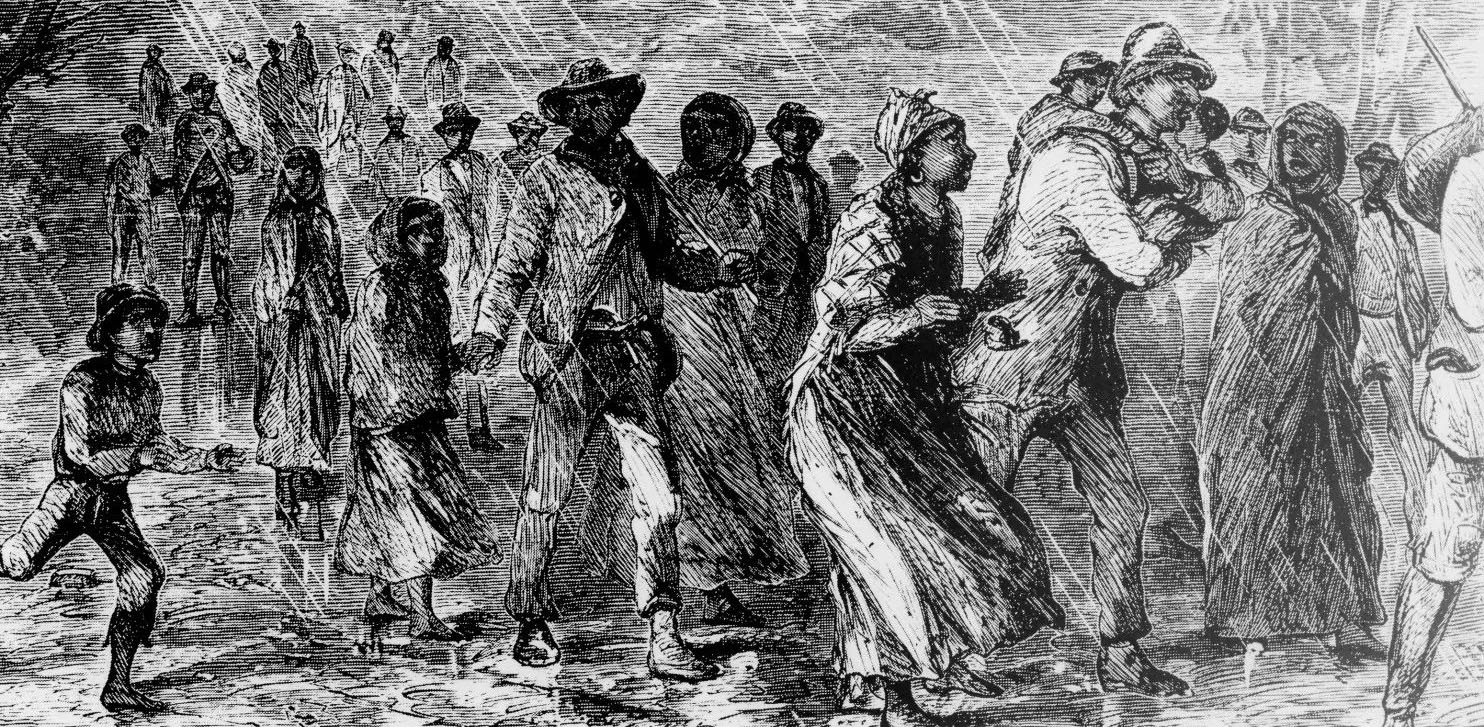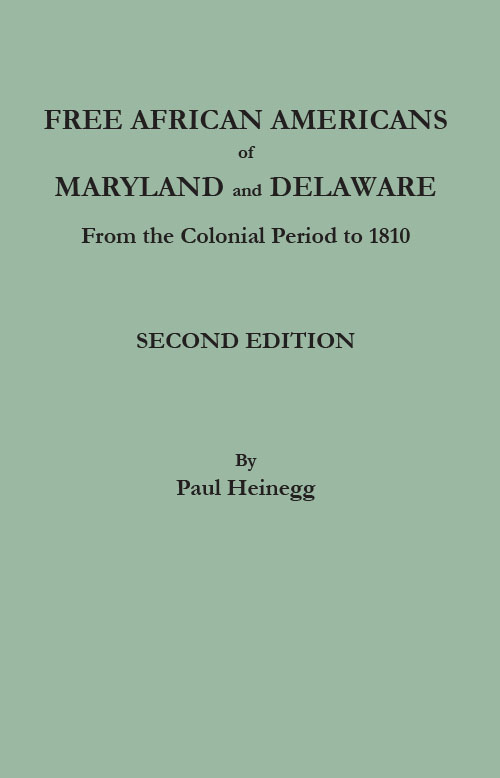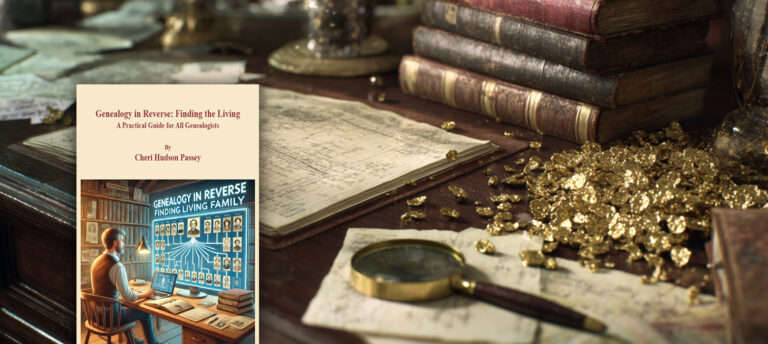
BUTLER FAMILY Excerpt from Free African Americans of Maryland and Delaware from the Colonial Period to 1810. 2nd Edition, by Paul Heinegg
The new 2nd Edition of Free African Americans of Maryland and Delaware from the Colonial Period to 1810. 2nd Edition, by Paul contains genealogical evidence on more than 400 Maryland and Delaware black families (naming nearly 10,000 individuals), with copious documentation from the federal censuses of 1790-1810 and colonial sources consulted at the Maryland Hall of Records, county archives, and other repositories. The genealogies vary in length, of course, with a few occupying less than a page and others ranging over 10 or 20 pages, depending on the available sources. As readers can see from the following excerpt from the Butler family, originally from St. Mary’s and Charles counties but with branches in Baltimore, Anne Arundel and various Eastern Shore counties, the Butlers became involved in one of the most significant legal battles over slavery and racial inter-marriage during the colonial period. The Butlers were also a prolific family, accounting for numerous free black inhabitants of Maryland by 1800.
Butler Family of St. Mary’s County, Maryland
Eleanorl Butler, bom say 1660, was a white woman imported to Maryland by Lord Baltimore. She was the servant of Major William Boarman of St. Mary’s County in August 1861 when she married “Negro Charles,” one of Boarman’s slaves. William Boarman left a St. Mary’s County will on 16 May 1708, proved 17 June 1709. He gave his wife slaves Rchd, Charles & Elliner, his son John Baptiste slave Catherine, his son Francis Ignatius slaves Ann and Margaret, his daughter Mary slaves Sarah and Henry, and his daughter Clare slaves Jane and Susannah [Hodes, White Women, Black Men, 33; Charles County Wills No.3: 25]. The inventory of his estate on 11 July 1709 included an “Elderly Negro man named Charles,” an “old Irish woman,” a “Mallattoe” slave named Kate, a “Mallattoe” slave Jane, two ‘Mallattoe girl” slaves, and two “Mullattoe children” slaves. In 1730 members of the family were listed in the inventory of the estate of John Sanders: Charles “very old & lame,” Kate, Jenny, Nan and Betty “Negro women,” and seven children [Prerogative Court (Inventories) 1729-30, 634].
In August 1749 one of their descendants, Edward Butler, petitioned the Charles Countv court for his freedom from William Neale. The outcome of the case was not recorded. He may have been identical to Edward Butler, who was sentenced to death for robbing Trinity Parish Church but pardoned by the governor on 13 May 1754 [Archives of Maryland 31:32]. He apparently had a free “Molatto” wife named Susannah (Proctor?) and several children.
On 27 September 1763 two of Charles and Nellts descendants, William and Mary Butler, sued Richard Boarman of St. Marys County for their freedom in the Provincial Court, and between 1765 and 1767 the court took depositions from sixteen of their elderly white neighbors. Most testified as to what they remembered from their early youth, but a few (Edward Edelen, Benjamin Jamerson, James Jameson, Nathaniel Suit and Thomas Bowling) told what they had heard from their parents. Edward Edelen was probably the son of Richard Edelen, a deponent in Edward Butler’s suit for freedom in 1749, and Benjamin Jamerson was probably the son of Mary Jameson, another deponent in the 1749 suit. The deponents told conflicting versions of the Butler family genealogy, but they generally agreed that NeIl Butler and Charles were married in a ceremony which was conducted by a Catholic priest on the Boarman plantation. Some reported that Lord Baltimore warned Nell on the morning of the wedding that the marriage would make her and her descendants slaves for life and that Nell replied that she would rather many Charles than Lord Baltimore himself. The law then in existence enslaved white women who married slaves for the lifetime of their husbands and made slaves of their children. About a month after the wedding Lord Baltimore was apparently influential in passing a law which released such white women and their children from slavery if their marriage was permitted or encouraged by their master. Since the law was passed after Charles and Nell’s marriage, the children of Charles and Nell were kept as slaves by Boarman and his descendants [Provincial Court Judgments 1770-1, 233-44].
The Provincial Court decided the case in William and Mary Butler’s favor in September 1770, but the decision was reversed by the Court of Appeals in May 1771. In October 1787 their daughter, Mary Butler, sued in the General Court of the Western Shore and won her case [Cases in the Provincial Court, 371-7; Cases in the General Court, 214-36]. In The Heritage Within Us, The Butler Family of Pamunkey Neck a Butler descendant, James Frank Williams, traces a great many Butler descendants through the more than forty court cases which were brought by members of the Butler family following Mary Butler’s successful suit, as well as estate accounts and wills of the slave owners of the Butler family. Charles and Eleanor’s children were
2) i. Catherine1/ Kate, born say 1683.
ii. Janel born 1685, a “mallatoe woman slave” listed in the inventory of the Charles County estate of William Boarman in 1709 and a “Negro woman” listed in the inventory of the estate of John Sanders in 1730.
iii. Annl , born say 1687, a “Negro woman” listed in the inventory of the estate of John Sanders in 1730
3) iv. Elizabeth1,, born say 1693.
2. Catherine’/ Kate Butler, born say 1683, was probably the unnamed “Mallatto Servant” of William Boarman on 10 August 1703 when he accused John Brayfield of dealing and bartering with her [Charles County Court Record 1701-4, 249, 264]. She was bequeathed by William Boarman to his son John Baptiste Boarman in 1709 and was a “mallatoe woman slave” listed in William’s Charles County estate in 1709. She was called a “Negro woman named Kate” in the inventory of John Sanders in 1730. Several deponents in the William and Mary Butler vs. Richard Boarrnan suit testified that she was Charles and Nell’s daughter [Provincial Court Judgments 1770-1, 235, 236, 239, 241, 243]. She was the mother of
Continued…
Recent Blog Posts




